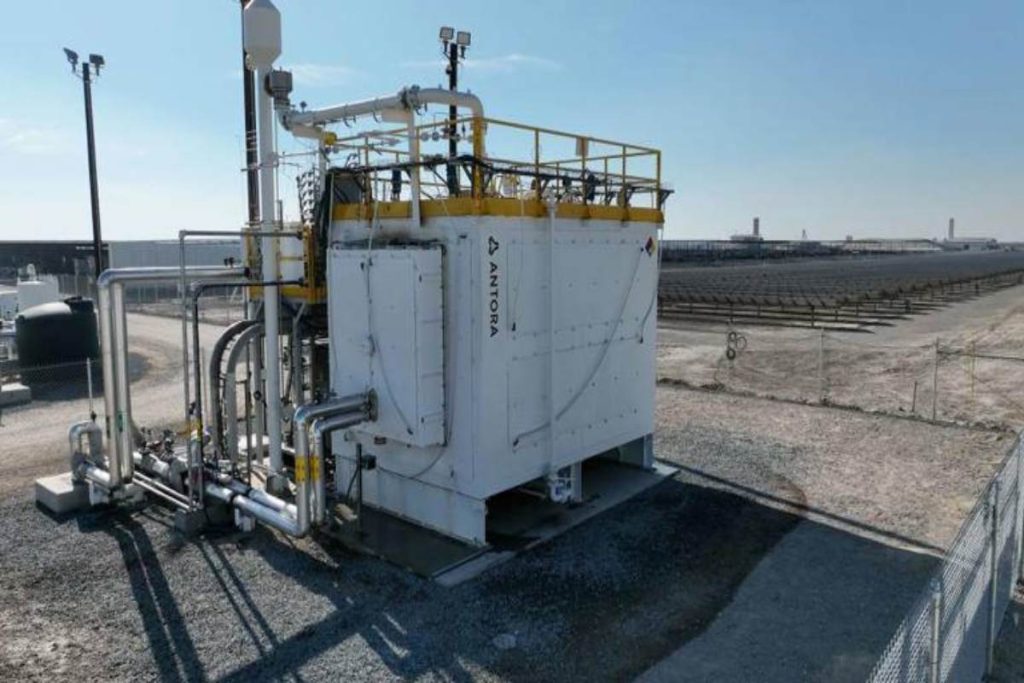
As the world grapples with greenhouse gas emissions and climate change, the end of fossil fuels seems inevitable. To avoid climate collapse, scientists are exploring multiple power sources. However, thanks to Andrew Ponec, hot rocks seem the next best thing.
Ponec’s passion for clean energy began as a curious public school kid tinkering with photovoltaics in his parent’s garage. His passion saw him drop out of Stanford to build grid-scale solar plants.
Afterward, he went back to get his degree. Then, he realized that the sun and wind are great for topping off the batteries in cars and homes. However, there is an even more urgent demand to clean up the fuel sources of industrial heat needed to make everything from baby food to steel.
And because of a factory’s energy demand, industries are yet to take advantage of the plunging price of renewables. Consequently, Ponec came up with the idea of hot rocks. “The rocks in the box are about 1,600 degrees Celsius,” Andrew Pone said, standing next to a thermal battery.
ALSO READ: The Mysterious Metal Spheres Scientists Just “Pulled Up”
That is nearly 3,000 degrees Fahrenheit, “Hotter than the melting point of steel,” he explained. Ponec’s box of white-hot rocks is significant because they didn’t need tons of coal or gas to become hot. Instead, they became heated by catching sunlight with the thousands of photovoltaic solar panels surrounding his prototype west of Fresno.
If successful, Ponec and his startup Antora Energy could be part of a new, multi-trillion-dollar energy storage sector. They simply use sun or wind to make boxes of rocks hot enough to run the world’s biggest factories.
“People sometimes feel like they’re insulting us by saying, ‘Hey, that sounds really simple,” Ponec laughed. “And we say, ‘No, that’s exactly the point.'” According to Ponec, hot rocks currently store ten times as much energy as lithium ions worldwide. This invention stems from an earlier version from the 1800s known as Cowper stoves.
POLL—Is Climate Change a Major Threat That Requires Immediate Policy Action?
Often found in smelting plants, these massive towers of stacked bricks absorb the wasted heat of a blast furnace until it heats to nearly 3,000 degrees Fahrenheit. Afterward, it provides over 100 megawatts of heat energy for about 20 minutes.
In addition, users can repeat the process 24 times a day for 30 years. This clean, renewable energy source aims to reduce greenhouse gas emissions to the barest minimum. Hence, Antora is among the startups experimenting with different kinds of rocks in insulated boxes or molten salt in cylinders.
While speaking about the project, Ponec said graphite intrigued the team for several reasons. He said the cheap carbon found in pencils, used to smelt aluminum and steel, can hold so much heat. In addition, Ponec said it glows hotter than the sun.
ALSO READ: Scientists Discover Oldest Living Creature From Years Ago
Antora has raised $80 million in seed money from investors, including Bill Gates. However, their main competitor is another Bay Area startup, Rondo. Unlike Antora, Rondo uses abundant refractory brick, cheaper than carbon by weight. However, it is not as energy-dense.
Nonetheless, Rondo has attracted even more funding than Antora, and its first battery is up and running. Rondo’s prototype is producing commercial power for an ethanol plant in California.
Both startups are eager to bring results after participating in the COP28 climate summit in Dubai. Ultimately, their breakthroughs in clean energy spell the end of fossil fuels.
You Might Also Like:
FBI Warns Israel-Hamas Conflict May Amplify Threats to Public By Terrorists This Holiday
Judge Dismisses Cattlemen’s Request to Halt Wolf Reintroduction in Colorado
Mother of Virginia 6-Year-Old Who Shot a Teacher Bags Two Years in Prison for Child Neglect
Carol Swain Accuses Harvard Of “Redefining” Plagiarism to Protect President Claudine Gay
Supreme Court Justices Gorsuch, Thomas, Barrett, and Kavanaugh Sign Dobbs Opinion Without Revision
